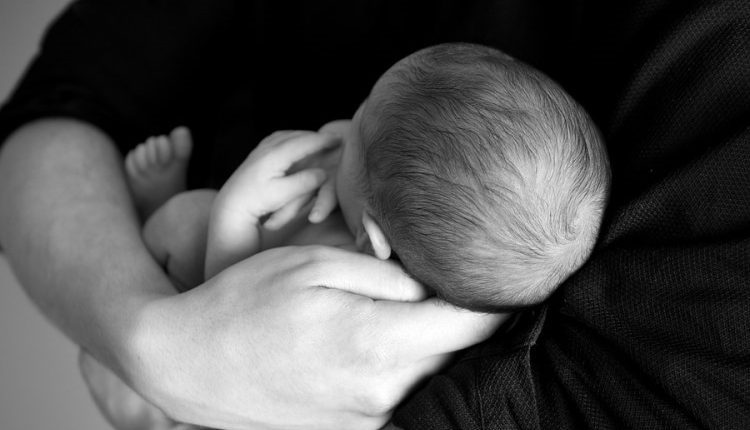
Infants' syncytial virus, italian paediatricians: 'Gone with Covid, but it will come back'
The syncytial virus in newborns is the main cause of bronchiolitis. Anti-Covid measures have neutralised it, but this absence could trigger a more serious epidemic than previous ones
“Before the Covid era, hospital emergency rooms were full of babies with respiratory syncytial virus (RNS) infections in winter
“With the Covid era, this virus has disappeared from circulation, not only in Italy but worldwide.
The reason probably lies in the measures taken to combat Sars-CoV-2: distancing, hand washing, use of masks, closure of crowded places.
But what will happen after Covid? Certainly, VRS will be back in circulation and there is a risk that there could be a slightly more serious epidemic than before.
Usually, infants are protected by the antibodies their mothers pass to them through the placenta.
But this year there has been a jump, no one has fallen ill with the respiratory syncytial virus, so there is a risk that babies will be born to mothers who do not have antibodies and therefore will be less protected.
So says Fabio Midulla, president of the Italian Society for Infantile Respiratory Diseases (SIMRI) and head of the paediatric emergency department at the Umberto I General Hospital in Rome, speaking at the 76th Italian Congress of Paediatrics with a lecture dedicated to the history of VRS.
Midulla stressed that “if we continue to wash our hands, use masks when we have a cold, and try to avoid crowded places, the circulation of the respiratory syncytial virus will probably be contained”.
Together with the influenza virus, VRS (Respiratory Syncytial Virus) is one of the most important viruses in circulation “because it affects all ages, from the newborn to the elderly person with comorbidities, and the clinical manifestations it gives depend on the age and immune status of the patient”
In infants it is the main cause of bronchiolitis,” explains the SIMRI president, “in pre-school children it is the cause of a flare-up of asthmatic bronchitis and asthma in older children; in adult smokers it causes a flare-up of chronic obstructive bronchitis; in people over 75 with comorbidities it causes severe respiratory failure and interstitial pneumonias that can lead to death.
And it is a virus that is present all over the world,’ says Midulla. ‘It has been estimated that in one year 30 million children under the age of five become ill, more than 3.5 million of these children are hospitalised and about 100 000 die, mostly in developing countries.
Telling the story of the virus, Midulla recalls how ‘in 1979 in Naples there was an epidemic of bronchiolitis from which more than 20 children died.
A scientific committee was set up to try to understand the reason for these deaths, which was called a ‘dark evil’.
After two years, it was discovered that it was the respiratory syncytial virus
“Poor socio-economic conditions, overcrowding, malnutrition and reduced immune defences had triggered this type of pathology’.
Today the mortality rate is low, ‘however,’ Midulla explains, ‘there are children at risk, such as those with congenital heart disease, serious premature babies, those with congenital malformations, neuromuscular diseases or chronic respiratory diseases; they can get this infection in a much more serious form than a child born at term who has no problems.
Mortality rates are still high in developing countries,” the expert stressed.
The respiratory syncytial virus, therefore, is still frightening, ‘it is very frequent and mainly affects newborns because they do not yet have a fully developed immune system’.
Another characteristic of the virus,” explains the expert, “is that it does not provide lasting immunity, meaning that the same person can become infected several times during their lifetime.
To defeat it, ‘there is no antiviral drug and therapy is either preventive or symptomatic,’ says Midulla.
‘There are specific monoclonal antibodies on the market that can be used in certain categories of patients such as preterm infants, heart patients, children with chronic respiratory diseases or neuromuscular diseases.
It is the only effective therapy against the virus.
The expert then recalls that in the 1960s, ‘a vaccine made with the virus killed in formalin was marketed, but the vaccination was a disaster because the children who had been vaccinated still caught bronchiolitis, and in a more serious form.
Two children died,’ the expert concludes, ‘so there has been no vaccine against this virus since the 1960s, and it cannot be developed because the immune response of the host is not well known.
There is a phase 3 trial of a vaccine administered to pregnant mothers during the third trimester, but it is not yet commercially available.
Read Also:
Kids With Sleep Apnea Into Teen Years Could Develop High Blood Pressure


